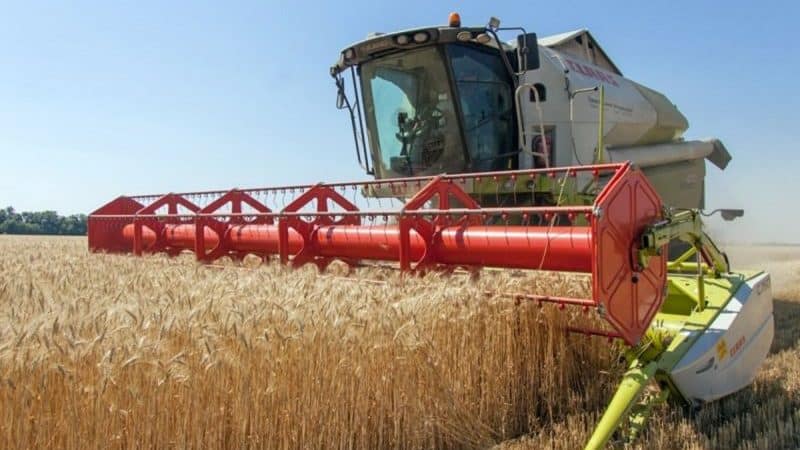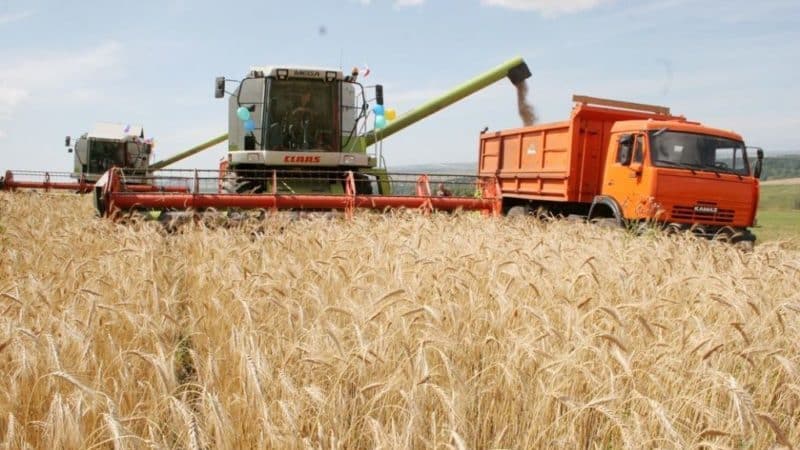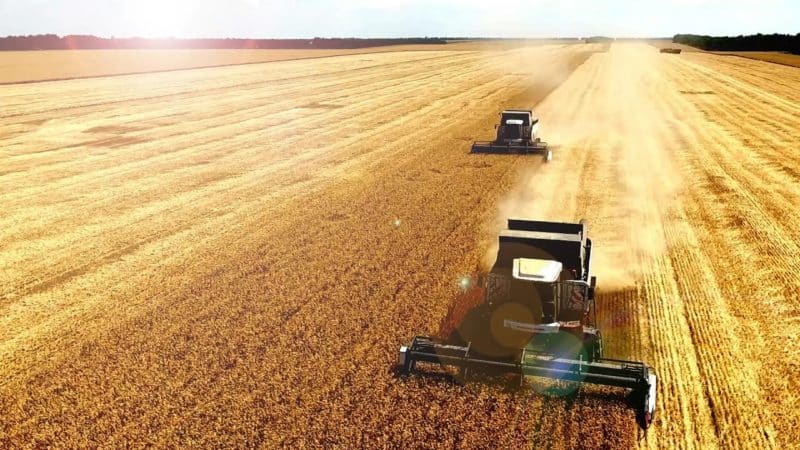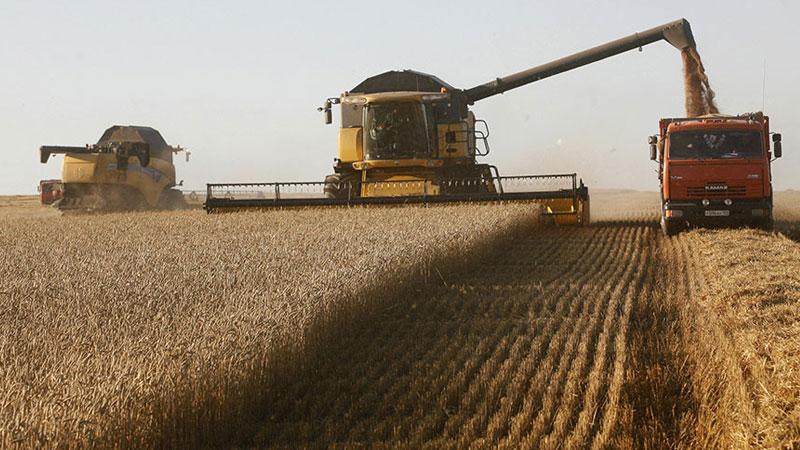How and when wheat is harvested: timing, methods and further storage
Wheat harvest time depend on the natural and climatic conditions of the region. The grain is harvested on several days a year. If harvested early, it will be unripe; if a little later, there will be large losses of grain due to shedding. We will tell you how wheat ripens, when it is harvested from the fields and what harvesting technologies are used.
Timing for harvesting wheat from fields
Harvesting processes vary depending on the type of crops − winter crops or spring.
Winter
Winter wheat is harvested when the grain moisture content is no more than 20%. If the harvest is not completed within 3-4 days, the wheat will become overripe and begin to crumble, which can lead to very large losses - up to half the harvest.

Spring
Spring wheat is harvested in one or two phases. Single-phase harvesting is carried out at the beginning of full ripeness at a grain moisture content of 18-19%, the work is completed within no more than 5 days. Otherwise, there may be overstay of crops, which worsens the characteristics of the crop: glassiness and weight of 1000 grains decrease, flour-grinding, baking and sowing properties deteriorate.
Two-phase cleaning is carried out in case of large contamination of crops or their occurrence. It begins in the middle of waxy ripeness, when grain moisture is from 25 to 35%. Harvesting work begins 5-6 days earlier, the download height is set to 15-20 cm.
By region
In the southern regions of Russia, the harvesting campaign starts in mid-June, in the Central Black Earth region - in the second ten days of July, in the central regions - in August, in Siberia and the Far East - in September.
This is interesting:
What is feed wheat and where is it used?
What is soft wheat, how does it differ from hard wheat and where is it used?
What are the classes of wheat and how do they differ from each other?
When it ripens, how to determine maturity

How does wheat ripen? Grain has three degrees of ripeness:
- Milk ripeness – initial phase of maturation. Begins 14-15 days after flowering. Duration is 10-15 days. The plants are still green, the bottom of the stems and lower leaves turn yellow and die, the grain is green, and when crushed it releases a milky white liquid. The grain is still incomplete.
- Waxy ripeness: the entire plant has turned yellow, the grain becomes waxy in consistency and stops accumulating organic matter. Cleaning usually begins during this period.
- Full ripeness. The grain loses all excess water, becomes hard, does not break, crunches when tested, crumbles easily, contains 13-14% moisture, so harvesting is carried out before this stage begins.
Preparing fields for harvesting
In order for harvesting to take place with maximum efficiency, a complex of organizational and physical work is performed:
- They repair and prepare access roads and consider the location of turn lanes.
- Determine the optimal ways to move harvesting equipment.
- The fields are divided into “paddocks”. When calculating the operation of equipment for 1-2 days, the ratio of the length and width of the area is usually from 1:5 to 1:10; the laid down areas are separated into a separate “pen”.
- The areas and the space between the “pen” are mowed.
- They make fire-prevention plowings between the “pen”.
Harvesting methods
The most common method is direct combining. This is a single-phase cleaning in one pass of the cleaning unit. This method is used when the ears ripen evenly and there is a small amount of weeds. The disadvantage of this method is the larger amount of equipment used, which leads to an increase in the cost of wheat.
Attention! Single-phase harvesting is carried out in sunny weather or at least 5 hours after the end of the rain.
The separate method is used when wheat is densely sown, there are a large number of weeds, and uneven ripening of ears. Operating principle: first, windrows are mowed and formed; after the humidity has decreased to 17-18% (after 2-3 days), the windrows are picked up and threshed.
How is wheat harvested using this method? Currently, the processes are mechanized, they are carried out by a combine with the appropriate equipment. It is impossible to leave a long gap between works, as the grain begins to crumble, which leads to crop losses.

How in the old days they harvested wheat by hand
In the old days, harvesting was carried out manually - using sickles and scythes. The wheat was mowed, the compressed ears were tied into sheaves, which were put into dough. Then the sheaves were stacked in the fields, dried, and threshed with flails.
Wheat moisture content during harvesting
In the waxy ripeness phase, the humidity is 25-35%. The percentage required for grinding is 12-15.
Primary processing and storage of crops

Immediately after harvesting, grain cannot be sent for storage or put on sale, as it has high humidity and is clogged with various debris and impurities. It is required to carry out a set of measures to prepare grain for storage.
After entering the current, the grain is cleaned, dried and sorted. Then they are sent for processing until they are in good condition - they are cleared of grain and debris and dried again. Only after these works are they removed for long-term storage.
Warehouses for storing grain must be dry and ventilated. The temperature in the warehouse is from 6 to 8°C, humidity is 60-70%. To avoid friction and self-heating, the grain is stirred periodically.
The grain is stored for 3-4 years. Seed grain is stored for no more than a year.
Conclusion
Cleaning company is a complex and responsible process. Its correct implementation affects the size of the harvest. Grain losses due to improperly organized work amount to 50-60%.